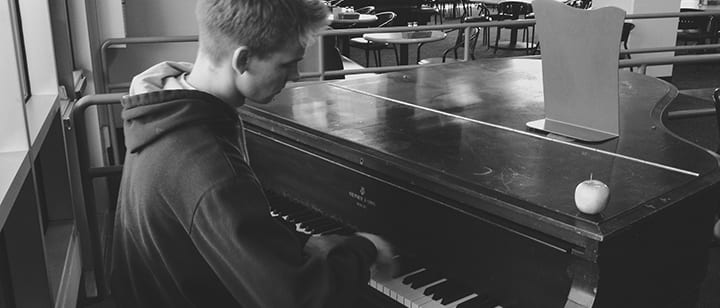 What are the best exercises for practicing legato music on the piano? Here, Helendale, CA teacher Sylvia S. offers her tips and tricks for mastering the technique…
What are the best exercises for practicing legato music on the piano? Here, Helendale, CA teacher Sylvia S. offers her tips and tricks for mastering the technique…
Legato… a beautiful and mysterious word that brings images of a pair of swans gracefully gliding on the placid waters of a still lake. In the phrasing of the Italian renaissance, the time and place where the language of music was born, legato meant tied, bound, or connected. In terms of legato music, it means this and more. The art of playing legato can be compared to floating serenely across the water of a Venetian canal in a gondola, holding hands with your lover through the tunnel of love. In the romantic language of music, legato is the ultimate in smooth, seductive, sensuous phrasing.
This word is most often found in classical, or “legitimate” music, while piano sheet music will more often use descriptions like “play smoothly.” Regardless of the wording, the artistry of smooth or legato style is as much imagination and imagery as it is technical ability. Before practicing “how” to play legato, an aspiring pianist who wishes to bring his or her audience the tantalizing treats of smooth sound imagery may venture in the ideas of desire. Desire to enter into this styling, and then delve into the practical.
Practice Scales and Arpeggios
So, what is the practical side of legato? What, or how, to practice before schmoozing into that gondola or shape-shifting into that swan lake? Despite the ease with which experienced pianists seem to glide over the keys, the reality is that strength and consistency is just as important as a light hand at the performance.
Practicing scales and arpeggios is one way to start. Practice two ways. First, slowly and deliberately lift and lower each finger using maximum force. This builds musculature in the hands, which you will need for the greatest control. Then, after your hands are warmed up, work on smoothing out the sound. Watch for any weakness, particularly with the fourth finger, which tends to be the most difficult to work independently. Also, look for any clumsiness or “thunking” sounds; often, this will be where the thumb and fingers are alternating.
If you’re working on speed or keeping a steady pace, you can use a metronome, or if it’s simply a legato touch you’re after, your metronome can take a little vacation for a while. Scales and arpeggios will help develop strength, evenness, and smoothness, as long as the only phrases you play are based on bits and pieces of consecutive or arpeggiated notes.
Work on Agility Exercises
More likely, though, your legato songs or passages within a longer piece of music will be more complicated. This is where agility exercises come into play. One of the most well-known and dependable ways to develop agility on the piano is from a traditional exercise book written by a 19th century French composer and piano teacher named Charles‐Louis Hanon. Officially titled “The Virtuoso Pianist in 60 Exercises”, this volume is known to initiated pianists simply as “Hanon”.
Like exercises for sports stars, the first few exercises are simple. As the book progresses, the exercises become more difficult. Each builds on the other, and with dedicated practice over time, can create effective improvements in strength, speed, and agility that borderline on miraculous. Like anything worthwhile, dramatic improvements take time, and grand improvements in playing legato music will come with steady practice. However, if you need to learn how to play legato on short notice, even a few weeks of dedicated Hanon drills can help form a foundation of technique to underscore the imaginative artistry of a passable piano performance.
Eventually, those beautiful and mysterious sound paintings will become a gift for your audience, and when that time comes you will know. Because you, too, will feel that cool electricity of excitement rise up your arms as you play; those swans will come to life through the smooth sonic waves coming from your light touch on the keys. When that moment arrives, all at once you will share and experience the magic known as legato.
 Sylvia S. teaches singing, piano, theater acting, and more in Helendale, CA. She comes from a musical family of several generations, and her experience includes playing an electric keyboard and singing vocals in a professional, working band. Learn more about Sylvia here!
Sylvia S. teaches singing, piano, theater acting, and more in Helendale, CA. She comes from a musical family of several generations, and her experience includes playing an electric keyboard and singing vocals in a professional, working band. Learn more about Sylvia here!
Photo by BTNPhoto
Suzy S.

